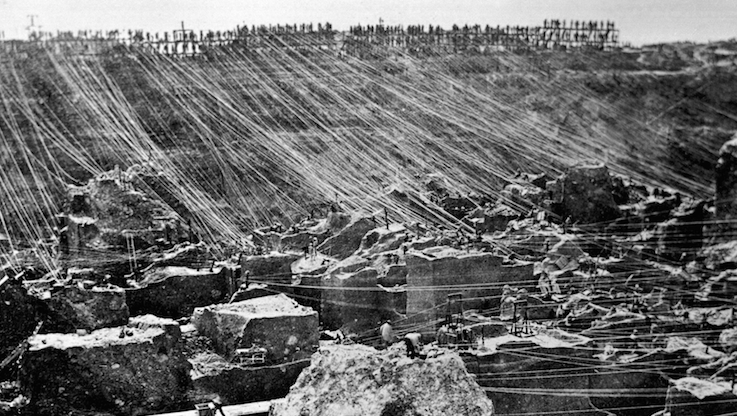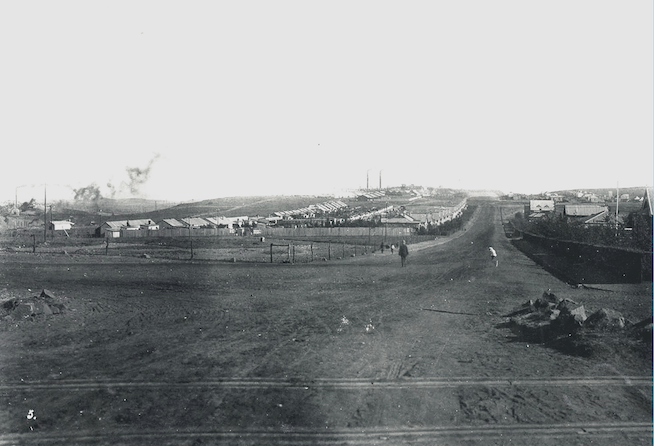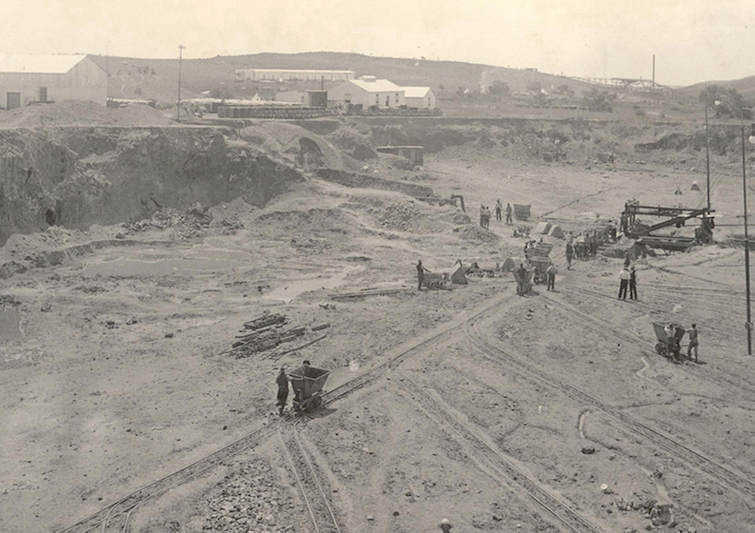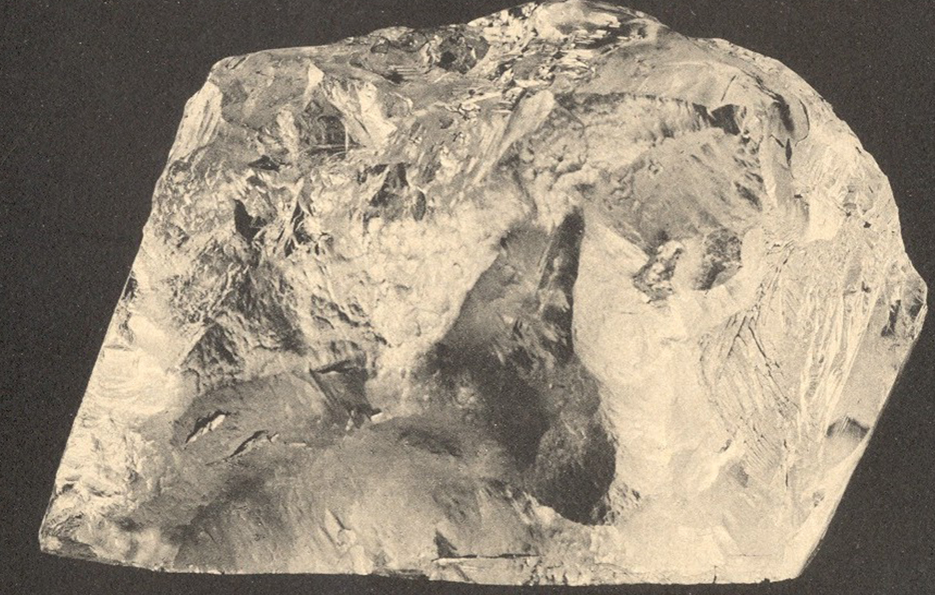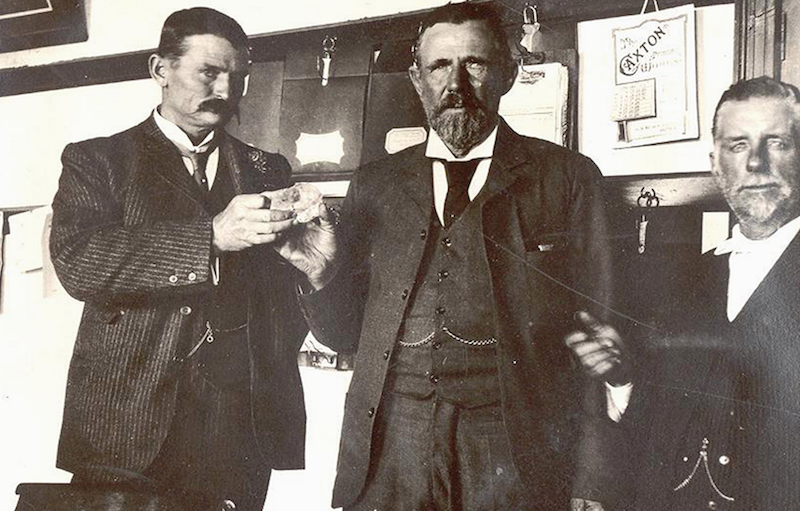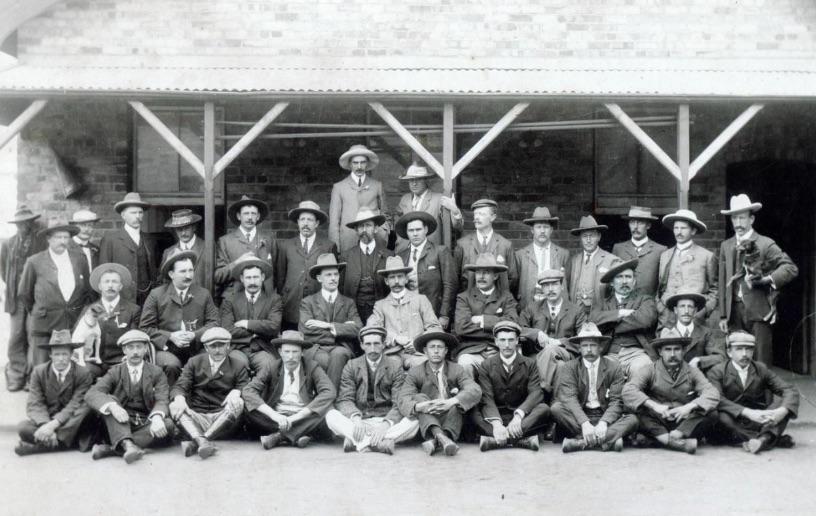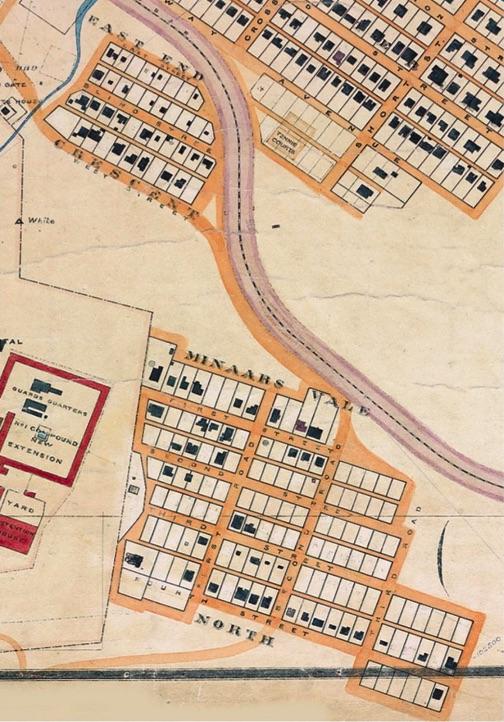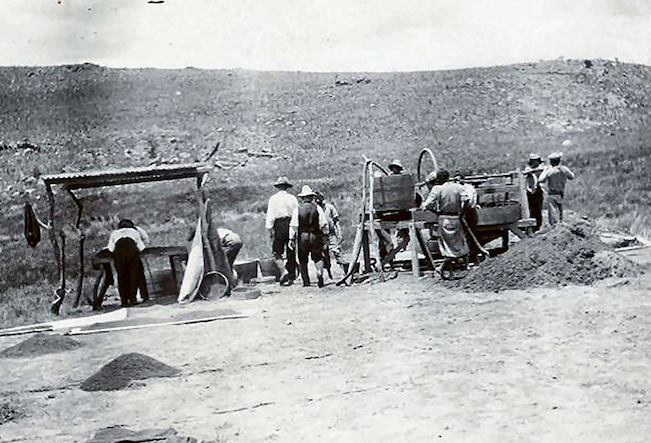
Disclaimer: Any views expressed by individuals and organisations are their own and do not in any way represent the views of The Heritage Portal. If you find any mistakes or historical inaccuracies, please contact the editor.
I discovered two documents in a file within a file whilst cleaning out my computer. It appears as though a letter was written at two different times, one quite some time ago and one in 1978 by the same person. I have no idea who gave it to me or when or who the author was. It appears to have been copied by typewriter, not very well and then copied by photostat and is very hard to read. I have had to make some adjustments to the text to make it readable but have kept the original text as much as possible. There is also a short insert by someone other than the author of the main text in cursive writing. The documents will give readers an idea of what life was like at the Premier Mine in the early 1900s. John Lincoln
The Story Begins - The first letter - date unknown
With no literary pretensions I am attempting to set down for my grandchildren a clear picture of life starting as it did at the beginning of the Century.
Your great great grandfather was John Brown and his wife Mary arrived in S.A. with their family, John, James, Adan, Samuel, and twin daughters Flora and Jennie. They sailed from Scotland in The Gypsy Bride, a gallant little sailing ship carrying people to the Cape. The magic news that diamonds were to be found here tempted them to risk the dangers of a long and dangerous voyage. Who knows they might even make a fortune. Many of the very young children died on board from measles alas, and the cows, two of them, which were the only source of milk were washed overboard in a horrifying gale. On landing at the Cape they made their first home at Ceres.
Here, my father, the last of this big family was born. Soon news of the Kimberley Diamond discoveries urged John Brown together with John and James to set out by Ox wagon to this mine area.
Today you can read books telling of hardships endured by these intrepid fortune hunters. I often wonder what their feelings were when they arrived at the Diamond Fields. A tent was set up at once, followed by the "pegging of claims". At a pistol shot, sprinters (of all ages) raced to the spot they fancied and swiftly drove in pegs.
Claims inside Kimberley's Big Hole (De Beers Archive)
The cursive writing note on the first letter reads as follows:
Uncle Hugh Legge? When a schoolboy at King Edward School, being a champion sprinter was hired to do a pegging run on the Lichtenburg diggings. Having pegged a claim, sat there the whole day in the sun awaiting the claims registrar!! Had no hat on either.
The Story Continues - The second letter - 3 March 1978
With no literary pretensions I am jotting down early memories of my life.
The ten dear grandchildren I hope will gather what life and the world was like at the beginning of the century, and perhaps derive some amusement. My parents of Scottish and English birth, like so many folk at that time lived and worked hard etc.etc.
I was born in 1900, in Kimberly. Siege baby. Down the Mine. Boers got the range. Food shortage. Fortunately this in no way concerned me but bitter for the parents seeing hungry children around them. At the cessation of hostilities we went overseas. Father's impaired health.
We returned, started life at Cullinan Diamond Mine. Only a few white families. Settled into tents. Heat dust and very few amenities. Premier Mine life provided me with my earliest memories. We led a life of freedom, a koppie without even a path.
Early photographs of the Premier Mine (Cullinan Mine Archive)
Barefoot we scampered down to the only stream taking back branches of bluegum which we packed tightly into buckets, paraffin tins and arranged them next to mother's beautiful curtains of blue brocade. Besides being decorative the smell of the blue gums' eucalyptus discouraged flies. The tent was huge and with scarlet linings. I fancy my father had purchased it as war time Army goods. Their huge double bed rested very elegantly on a thick layer of sand. I remember one morning seeing my mother crying bitterly, being comforted by my Father. Poor soul our enjoyment of veld life only meant hardship for her in the shocking heat.
One day before I had started School, my father rushed down the hill calling my mother to come at once with the three children. In starched pinafores, how these were produced under those difficult circumstances I do not know, but presently all of the few families working on the Mine were assembled at the washing tables. All employees were assembled there and the Manager Mr. Donald McHardy said that a large diamond had been found of great value. The Mine employees rugged, sunburnt men in thin shirts and pants, heavy boots, hide felt hats. The announcement meant little to me but I was amazed to find my father at my side urging me forward to the long sloping table under zinc roof supported by poles. The Manager placed a tiny stone in my left hand and a very large one in the right. My father supported my hand as I held the Cullinan Diamond in my rather small paw. The discovery of this gem created great interest around the world. The biggest diamond in the world. Several times I have had the pleasure of visiting the tower in London where the Royal crown and Orb are and reflect back to me, reminding me of a very hot day in the Transvaal when it was put into hand my, given me to hold, a little freckled maid of five.
The Cullinan Diamond (Cullinan Mine Archives)
At the close of our stay in the tent, the Company commenced building wood and iron houses fronted by a narrow stoop. The second bedroom at the back had sand flooring, no boards! One night the sky skies opened and the rain raced down the Koppie at the back, into the kitchen and out where we were accustomed to collecting ‘mis’ (cow manure mixed with water) and smeared onto the floor. This would give a wonderful smooth surface to the kitchen floor and with no flies at all. Very little dust. We children thought nothing at all of collecting cow dung and leaving the bucket outside the kitchen for the smearing in the following day.
The night of the flood found my sister and I fast asleep. We were awakened by the racing waters accompanied by my Mother's "Girls it’s all right. Dad is coming". With pyjama pants rolled above knees father paddled down and handed us into the arms of my dear Mother. We settled happily to sleep on the living room floor.
Hallsdorp
The smell of baking bread. We had a clay oven outside and all the bread we ate was made by my dear mother. Also the yeast, potato water a cake of ___, a little sugar and ___. Then lovely brown meal this produced the best yeast for bread that I ever have encountered.
Before I close the happy chapter on Premier Mine let me mention that, to this day I clearly remember the Marble Matches. My eldest brother, Harold Angus Brown, later to die glorious in France, Deville Wood, played from Hallsdorp to Stuartsdorp, every day a deadly contest with Conrad Stucke, Bill Frames and sister Estelle Frames. Hilda Stucke and the Brown Girls Hilda and Gladys cheering them on.
On the survey drawings Hallsdorp is called Minnaars Vale. It got its more common name from WS Hall who was in charge of the compound. He can be seen here seated in the light suit. It is unknown why Stuartsdorp was named such because it was an area known as East End on the survey maps.
Survey drawing showing Minaars Vale
No wonder that Headmaster Underwood glowered at us saying. You have not cleaned your shoes how could we ever arrive at School with clean shoes after climbing a koppie, looking back on it. Poor sparse Underwood had come from an Old English Village where he had never seen dust. I remember to this day that before we reached school we all stopped and took off our dusty shoes and buttoned boots and tried to clean them.
In 1906 we left our little house of wood and zinc at Hallsdorp, the mine had grown, it was heavily barb wired. I had enjoyed fly first year at the Stone School in Stuartsdorp. Names of kindly and well-loved neighbour‘s still occur to me. Mrs. Frames, her husband Viv and children Bill and Estelle, I will never forget. The Stucke group a son and several girls, the Bird family. I sang Pitter Patter down the pane at concert with ginger Tommy Bird. The Rev Flett was the first priest I remember. Crippled he visited all and sundry and the stony hill side must indeed be a sore trial to his bad foot. I remember him shouldering my young brother E.T.S. who was only a toddler over the stony koppie.
Main image: The first prospecting pan at the Premier Diamond Mine 1902 (Cullinan Diamond Mine Archive)
Comments will load below. If for any reason none appear click here for some troubleshooting tips. If you would like to post a comment and need instructions click here.

